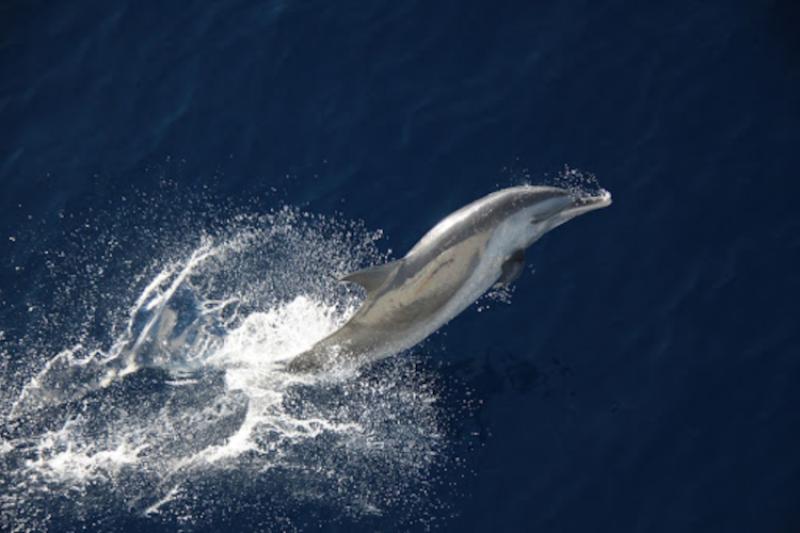From sun up to sun down, along the northern Gulf of Mexico, scientists search through binoculars, with eyes peeled for groups of pantropical spotted dolphins.
The Gulf Pantropical Spotted Dolphin Stock Structure study is one of several marine mammal surveys the Southeast Fisheries Science Center is conducting this year. The primary goal is to collect samples that can be used to inform population assessments of the pantropical spotted dolphin in the northern Gulf of Mexico.
Through the month of May 2023, our scientists will primarily be collecting tissue biopsies and water samples to extract environmental DNA of pantropical spotted dolphins. Each biological sample—tissue or eDNA—helps to further knowledge of pantropical spotted dolphins’ population structure. This information is crucial to successfully managing and conserving this species.
Importance of Understanding Population Structure
After the 2010 Deepwater Horizon oil spill, other ship-based surveys recorded fewer sightings and smaller group sizes for this species of spotted dolphins. Another oil spill in 2016 highlighted additional concerns about multiple impacts to these dolphins.
“A population must have a minimum number of animals to successfully reproduce to grow that population,” said John Barco, the Gulf of Mexico team lead for the NOAA Restoration Center’s Southeast Region. “An accurate assessment of a population’s size and structure is necessary to further inform restoration activities for this species.”
Until now, there has not been a study focused on understanding the population structure of the pantropical spotted dolphin in the Gulf of Mexico.
“To understand how previous events including oil spills have impacted this species, it is critical to evaluate the underlying population structure,” explained Nicole Vollmer, Ph.D., who is analyzing the genetic data from this study.
The survey team is trying to learn if there are multiple independent populations of the species within the northern Gulf of Mexico. They are sampling multiple groups or sightings of these dolphins to make sure the samples span across the study area and capture the genetic diversity in the region. The in-depth genetic work will define distinct populations of pantropical dolphins in the Gulf, where they are located, whether they overlap, and how frequently groups mix. This information is key to understanding the impacts of stressors like oil spills.
“We have the goal of collecting a minimum of 60 samples,” said Carrie Sinclair, a biologist collecting and processing tissue samples. “We cannot get all the samples from just a couple of groups, so it will take some work to find multiple groups over the broader area.”
Genetic analysis for this project will also include comparisons with more than 100 samples of this species collected during previous research.
Prior Research
In the northern Gulf of Mexico, pantropical spotted dolphin sightings have historically been common during visual surveys. The species has a worldwide distribution in tropical and subtropical waters and they are very social creatures. They travel in large groups ranging from tens to hundreds in the Gulf of Mexico, up to thousands in other parts of the world.
The Marine Mammal and Turtle Division at the Southeast Fisheries Science Center began studying the species in 1995. Research over the last 20 years has given us more information on the population size, species range, and the challenges this species faces from human activities and environmental change. However, surveys have been infrequent, which makes it challenging to detect changes in population trends, such as whether the population is increasing, stable, or decreasing.
Collaboration and Funding
The study is a collaboration of the Southeast Fisheries Science Center and the NOAA’s Damage Assessment, Remediation, and Restoration Program. Funds for the $700,000 project came from a $3.625 million legal settlement with Shell following the Green Canyon spill. A restoration plan published in 2021 identified the stock assessment work as necessary for management of Gulf of Mexico pantropical dolphins into the future.




